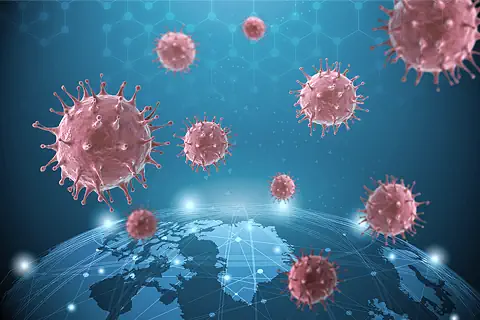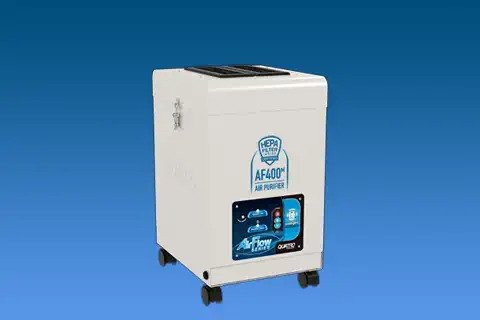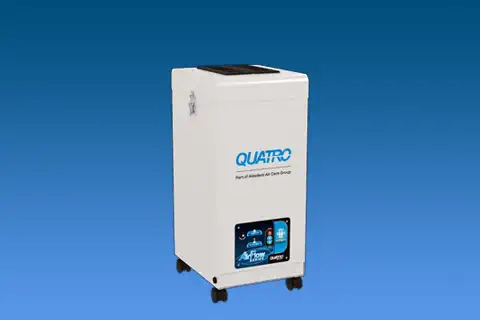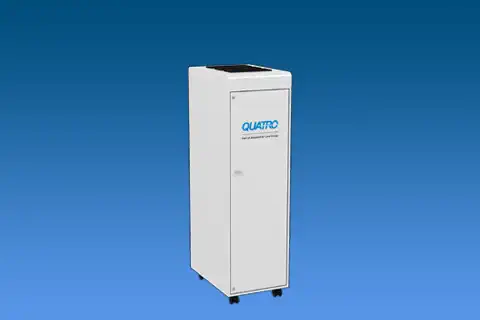COVID-19 and Virus Control
Overview
 In 2019, the world was confronted with a new strain of coronavirus. Identified as SARS-CoV-2, this new virus has caused a pandemic of respiratory illness across the planet. While mild to moderate for most individuals, COVID-19 has been a serious disease for the elderly, the immunocompromised and people with comorbidities. Symptoms include:
In 2019, the world was confronted with a new strain of coronavirus. Identified as SARS-CoV-2, this new virus has caused a pandemic of respiratory illness across the planet. While mild to moderate for most individuals, COVID-19 has been a serious disease for the elderly, the immunocompromised and people with comorbidities. Symptoms include:
- Cough
- Headache
- Fever/ Chills
- Shortness of Breath or Difficulty Breathing
- Sore Throat
- Muscle/ Body Aches
- Loss of Taste or Smell
- Fatigue
- Diarrhea
- Nausea/ Vomiting
- Congestion/ Runny Nose
With the onset of this new global pandemic, many governments responded by instituting lockdown orders to protect the vulnerable. Some businesses switched to remote work while others were forced to close entirely. Those deemed essential were allowed to stay open.
After over two years, countries have now recognized COVID-19 as endemic in our society. Most governments have lifted previous restrictions and society has for the most part reopened. To prevent further lockdowns and closures, businesses are now forced to consider ways to mitigate the spread of infectious diseases like COVID-19 in their establishments. Finding a path forward that not only allows businesses to thrive but also keeps both staff and clients safe is essential.
Reducing the Spread of COVID-19 and Other Viruses
Viral particles are spread when an infected person breathes, talks, coughs or sneezes. Encapsulated in droplets of mucus, saliva or water, these particles have the potential to contaminate indoor air and infect other people. While the larger droplets fall to the ground, the smaller ones evaporate and become aerosolized. Without proper measures in place, these viruses can spread and linger indoors, sometimes for hours at a time. The result is increased infection rate among workers and clientele.
The National Institute for Occupational Safety and Health (NIOSH) and the Center for Disease Control (CDC) developed a hierarchy of controls to address the risks associated with diseases like COVID-19. This pyramid of protective measures lists five different means for eliminating or reducing the spread of COVID-19 and ranks them according to effectiveness.
While much of the emphasis to reduce the spread has been placed on personal protective equipment (PPE) such as masks and gloves, these tools offer limited protection and appear fifth on the list as a means to manage the disease. An N95 mask, for example, allows particles up to 0.3 micron to pass through while an aerosolized coronavirus particle measures 0.125 micron.
Far higher up on the hierarchy is engineering controls such as ventilation and air purification. These measures remain the preferred method of industrial hygienists to mitigate the spread of disease as it helps remove the risk before it comes in contact with a worker.
Solutions for COVID-19 and Virus Control
To reduce the spread of infectious diseases such as COVID-19, the use of air purifiers in schools, offices and businesses is recommended. For those doing research on the virus itself, ventilation hoods that capture the virus at source are the preferred choice.

AF 400M
HEPA Air Purifier
A portable air purifier for localized chemical, odor and particle removal. 300 nominal CFM.
Get Product Details
AF 400
HEPA Air Purifier
Compact and powerful, the AF400 is ideal for localized chemical, odor and particle removal. 300 nominal CFM.
Get Product Details
AF 1000
HEPA Air Purifier
Enhanced protection against airborne pollutants including chemicals, gases, odors and particles. 600 nominal CFM.
Get Product Details
AF 2000
HEPA Air Purifier
Designed to handle high concentrations of chemicals, gases, odors, particles and biological contaminants. 1000 nominal CFM.
Get Product Details